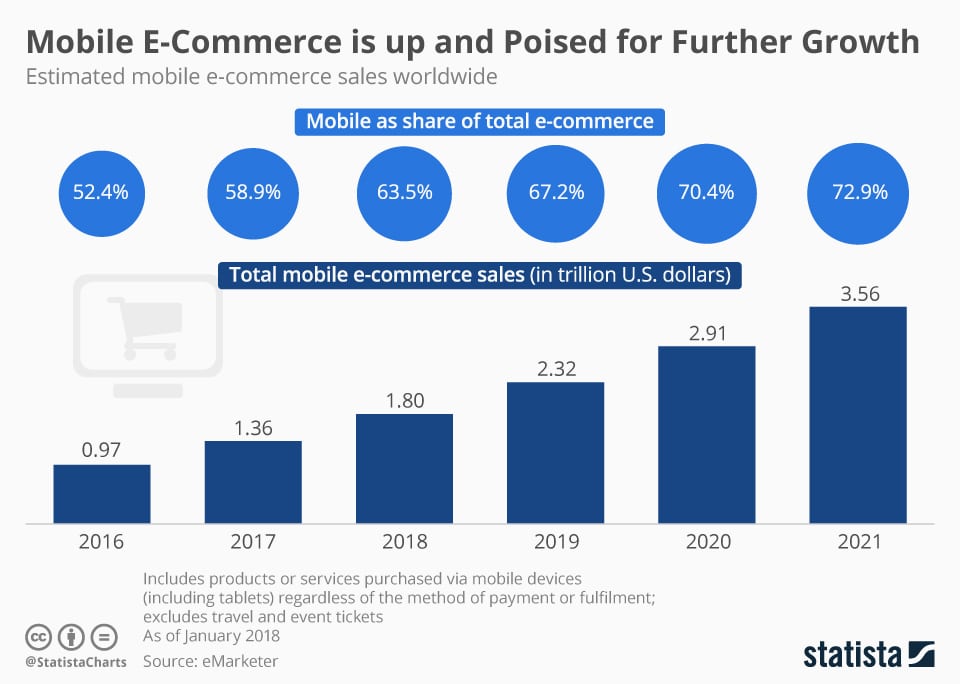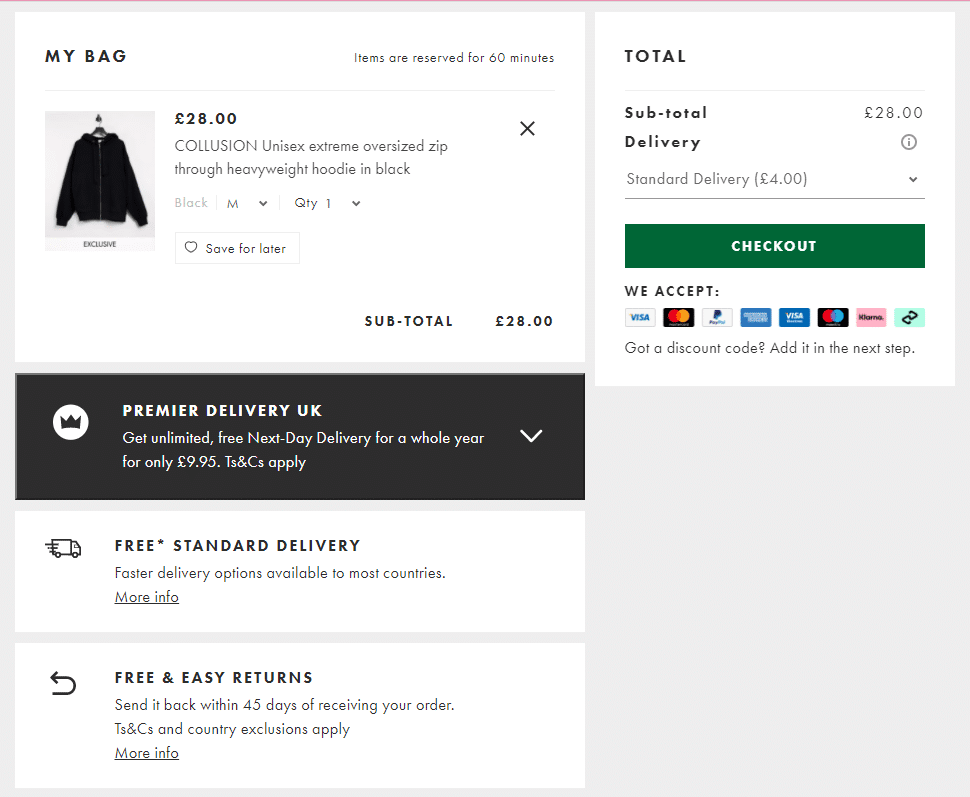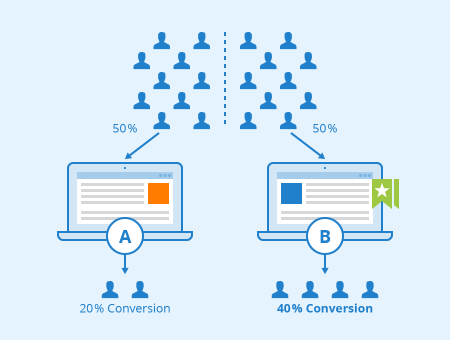Online shopping is more popular than it’s ever been. But as we buy more online, we’re also leaving more behind. Not all online shopping trolleys end in sales. In fact, according to Statista, in March 2020, 88% of online shopping orders were abandoned.
This article will discuss everything about shopping cart abandonment and what eCommerce businesses can do to tackle this growing phenomenon.
What is Shopping Cart Abandonment?
When we use the term shopping cart abandonment, we’re not talking about one of those trolleys you might see strewn by the side of a river from time to time. No, shopping cart abandonment is an eCommerce term central to the online shopping experience.
Ecommerce shopping cart abandonment refers to instances when online shoppers add an item to their trolley but never complete the sale. A high abandonment rate is an important warning sign for eCommerce businesses.
A high online shopping cart abandonment rate could indicate:
- Sub-par user experience
- A faulty sales funnel
- Inflated price-points
- Confusing delivery information
When eCommerce businesses track their abandonment rates, they can better make the changes necessary to keep this figure low. After all, low cart abandonment is a clear indicator of healthy sales. That’s what makes this seemingly minute detail of utmost importance to retailers.

Common Reasons For Shopping Cart Abandonment
There are many reasons why online shopping sprees end in abandoned carts. But if you find it’s happening a lot, it’s worth considering some of these common trigger points.
1. Shipping and delivery
Often cart abandonments occur when shipping and delivery options turn out to be costly and/or slow. Once buyers realise that shipping isn’t free and could take weeks (or even months) to arrive, they become less interested.

With eCommerce giants like Amazon now offering free, next-day shipping, it can be hard to compete. Ensure that shipping costs are laid out clearly alongside product descriptions to avoid any unexpected costs at the final checkout.
The key is to make the user experience seamless and services competitive. To reduce shopping cart abandonment, aim for clear messaging, competitive price-points, and fast delivery times.
2. Product price-points
Ecommerce sites with over-inflated product prices, complicated pricing structures, or a complicated checkout process are breeding grounds for shopping cart abandoners. Just think of it from the customers’ point of view.
Online shopping should be about simplicity and convenience, not complex mental arithmetic. Shoppers go online for ease of service and competitive pricing. Without these, your customers are bound to find a better deal elsewhere.
To encourage payment completion, mark prices clearly on product pages and offer discount codes to help hook in interest and close those deals.
3. Payment methods
If the customer doesn’t see their desired payment method, they’re not going to buy. They’ll reach the checkout but leave disappointed. Aim to facilitate as many popular payment methods as possible, including credit, debit, and PayPal.
Online payments may be commonplace these days, but they are still viewed with suspicion. Sharing your financial details online always comes with an element of risk, so your customers must view you as a trustworthy retailer. Having up-to-date security certificates and an easy-to-navigate payment process can go a long way towards this.
Including customer testimonials on your website is a great way to reassure shoppers. It tells them that other people have invested in the service positively and could differentiate between a sale and another abandoned cart.

4. Confusing and slow webpages
A clunky, confusing webpage could be costing you sales. Anything from bad navigation to slow loading speeds is enough to turn customers away. To get customers to complete purchases, make sure your webpage experience is seamless from start to finish.
Did you know that 57% of shoppers will abandon their purchase if they have to wait more than three seconds for a page to load? And if that wasn’t bad enough, a whopping 80% will never visit your site ever again. That’s a heavy price to pay for just one second.
Of course, it’s not enough to load quickly if they can’t find anything. Menus should be clear, a search bar should be prominent and important information like ‘contact us’ and ‘delivery and returns’ pages should be accessible from every page.
5. The ‘browsing effect.’
We’ve all been there, midnight scrolling through our favourite retailers’ new stock. We might even put an item or two in the trolley. But are we really going to buy it? Probably not.
This is what some people like to call the browsing effect. It’s when people act like they’re shopping but with no real intention of parting with their hard-earned cash at the end of it. It’s the internet equivalent of window shopping. Just like window shopping, a stand-out display could swing an impulse sale. So keep your website interesting, and you might turn idle browsers into active buyers.
6. Mobile unfriendly
We’ve said it time and time again. Make sure your website is mobile-friendly. That means make sure your website functions just as well on an iPhone or Android as it does on a desktop computer or laptop.
39% of mobile users abandon because it’s too difficult to enter personal information. A poor mobile experience is just a fast lane to cart abandonment. So make sure your mobile site is sleek, stylish, fast, and, most of all, completely functional. Today’s customers expect omnichannel purchasing options that work every time.

7. Checkout tricks
Trickery should have no place in eCommerce, but many online retailers try nonetheless. It might seem harmless, but these checkout tricks turn off customers like lightning.
Even things that may seem innocuous, like being asked to create an account at the very last minute, can send customers away. Sure, you might garner some customer email addresses and phone numbers, but you’ll lose their favour pronto. For shopping that ends in sales, avoid this type of checkout trickery at all costs.
How to Calculate the Shopping Cart Abandonment Rate for an Online Store
The abandonment rate calculates the number of users who show interest in a product without purchasing. It is calculated as a percentage figure by dividing all completed transactions by the total number of initiated transactions.
This is a beneficial metric for eCommerce businesses. It provides a direct insight into user behaviour. A less than favourable abandonment rate signals to a business that their checkout function needs some work.
Roadblocks to checkout flow are a major pain point for many online retailers. Global cart abandonment has soared to 77%, and it seems like mobile shopping is the main culprit, with abandonment rates on mobile phones reaching a sky-high 86%.
How to Decrease your Shopping Cart Abandonment Rate
It’s impossible to do away with cart abandonment completely. Consumer browsing habits will always result in some uncompleted payments. But don’t lose hope – it is possible to decrease shopping cart abandonment rates.
With some strategic planning, testing, and improvements, eCommerce businesses can encourage more customers to engage in final purchases.
But how?
By presenting customers with the right balance of savings, payment flexibility, and trust, they’ll complete purchases with confidence. Consider these five essential criteria for boosting eCommerce sales and reducing abandonment once and for all.

1. Enticing offers
Offer your customers enticing offers from the moment they start browsing your webpage. That could be free or discounted shipping rates that compete with similar online retailers or limited time offers that discourage leaving and returning later.
Check out your competition and offer your customers something they don’t. Put together a compelling call to action (CTA) that ushers clients to check out before the credit card goes back in the wallet.
Remember to be realistic. Only offer free shipping if it’s financially attainable. Yes, you want sales, but not at the expense of your profits. You’ve probably noticed lots of online eCommerce stores offering free shipping for orders over ‘X amount.
Not only does this encourage customers to spend more overall than perhaps they’d planned, but it’s also a great way to offer customers free shipping options without digging your business an early grave.
2. Pricing and payments
It’s time to optimise pricing and payment options. Customers like to shop around, especially online, so make sure your price points are spot-on. Check out your competitors and price your products competitively.
Remember, some simple tricks go into appealing pricing. There’s the old classic of using £9.99 instead of £10, for instance. Setting similar products at different price points, side-by-side, is another way to help customers feel like they’re picking up a bargain.
Finally, make sure your potential customers aren’t met with any unwelcome surprises at checkout. Display the final cost and return policy up-front, alongside product descriptions, and never spring hidden costs on your clients at the last minute.
By offering an excellent customer experience with a wide choice of products, reasonable shipping, multiple payment options, and upfront information from the start, you’ll increase sales and wave goodbye to excess abandonment.
Top tip
Try to integrate as many payment platforms as possible and ensure payment trust seals are clearly visible. Popular payment methods used by customers today include:
- Google Pay
- Apple Pay
- Samsung Pay
- PayPal

3. Streamline services
A professional, functional, trustworthy website for browser and mobile is essential. Customers make up their mind about your business within moments of entering your site or application. So make those moments count.
Ensure that your web and checkout page is fast, fun, and fully functional. Test for bugs to avoid shut-downs, improve load times, and prioritise a simple design (without too many popups) to guide customers seamlessly through the entire shopping experience.
Here are some simple ways to improve the eCommerce user experience:
- Test for site usability
- Check for technical errors
- Optimise loading times
- Design for mobile
- Simplify the checkout process
- Form-field lookup
- Guest checkout
- Progress indicators
- Personalised recommendations
eCommerce builders like the Baymard Institute, Shopify, and Barilliance help identify usability issues and offer some fantastic eCommerce personalisation tools to get you on your way. Tools include cart abandonment emails, personalised product recommendations, website personalisation, and real-time notifications.
4. Test, test, test
Could you do your research and keep doing it? By staying on top of key metrics, you’ll know where your business is doing well and where there’s still room for improvement. Everything from simple customer feedback surveys to split testing offers invaluable information.
Split testing (sometimes called A/B testing) involves carrying out randomised tests under controlled conditions to improve online metrics and increase overall sales. Carrying out periodic testing keeps businesses on the ball and relevant in this fast-changing market.
Include search engine optimisation (SEO) as part of your testing programme. Ensure your page is optimised for Google and other search engines, and make sure your search engine presence is an accurate reflection of your products and services.

5. Don’t give up
Cart abandonment doesn’t mean it’s all over. There are several strategies that online marketers can use to encourage customers back. Cart recovery is big business.
Recovery emails and cart abandonment emails remind shoppers of their ‘almost’ purchases. In some instances, this will result in a sale after all. This method of remarketing products by retargeting customers is very effective. In fact, retargeting has the potential to increase conversion rates by up to 150%.
Treat them well, and you’ll sell
Ever heard the saying ‘treat them mean to keep them keen? Well, disregard it completely. It won’t serve your love life, and it certainly won’t support sales. The key to reducing cart abandonment is treating your customer base with the respect they deserve.
User experience is key. That means streamlined omnichannel services and absolutely no ‘sneak-attack costs at checkout. It means you should also be easy to contact to help with any last-minute questions. Having a live chat option or an easy to find phone number can build trust and encourage sales.
Click here to learn how RingCentral solutions could help you improve customer experiences with integrated, single communications platforms.
Originally published Jun 24, 2021, updated Apr 10, 2023

